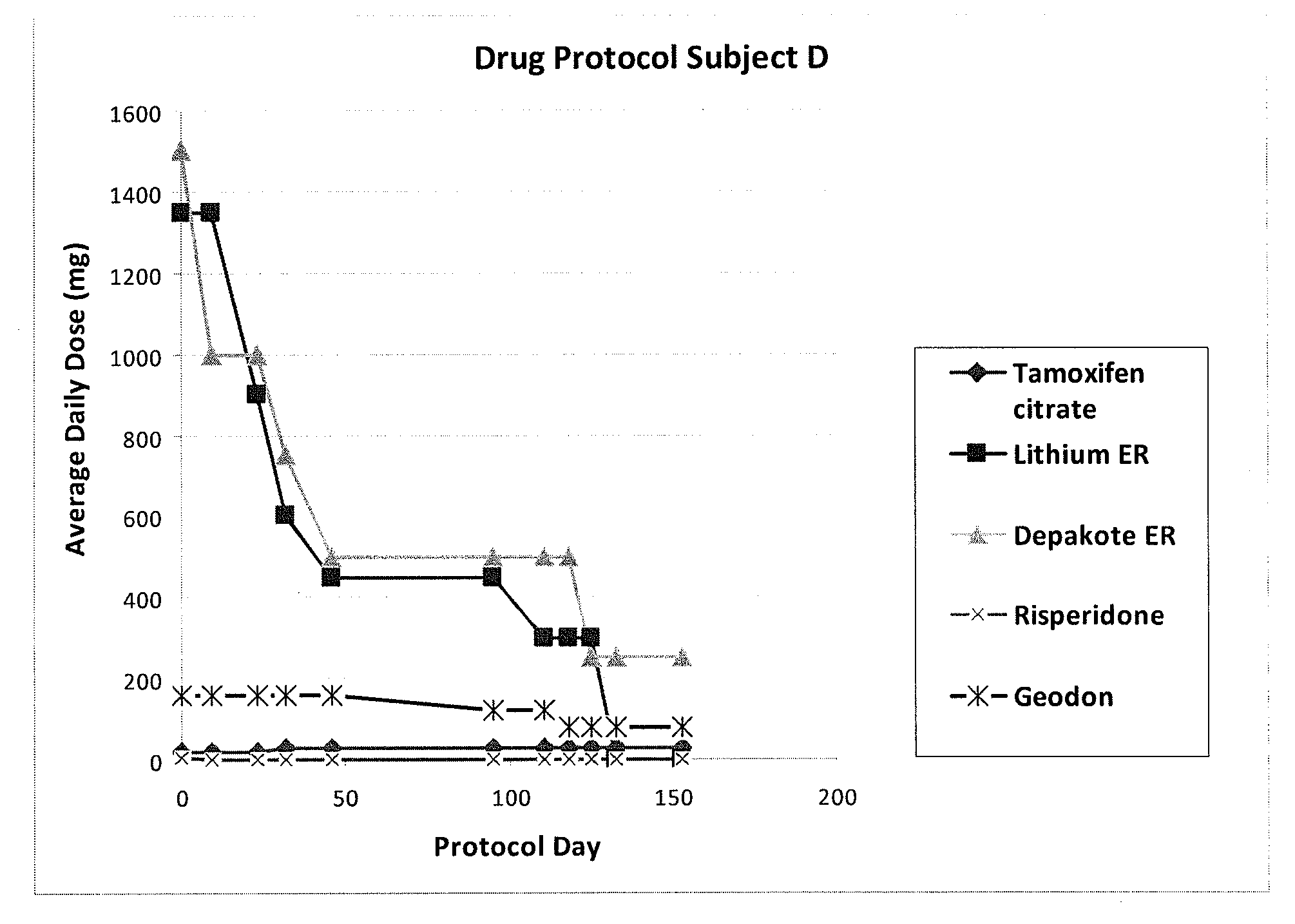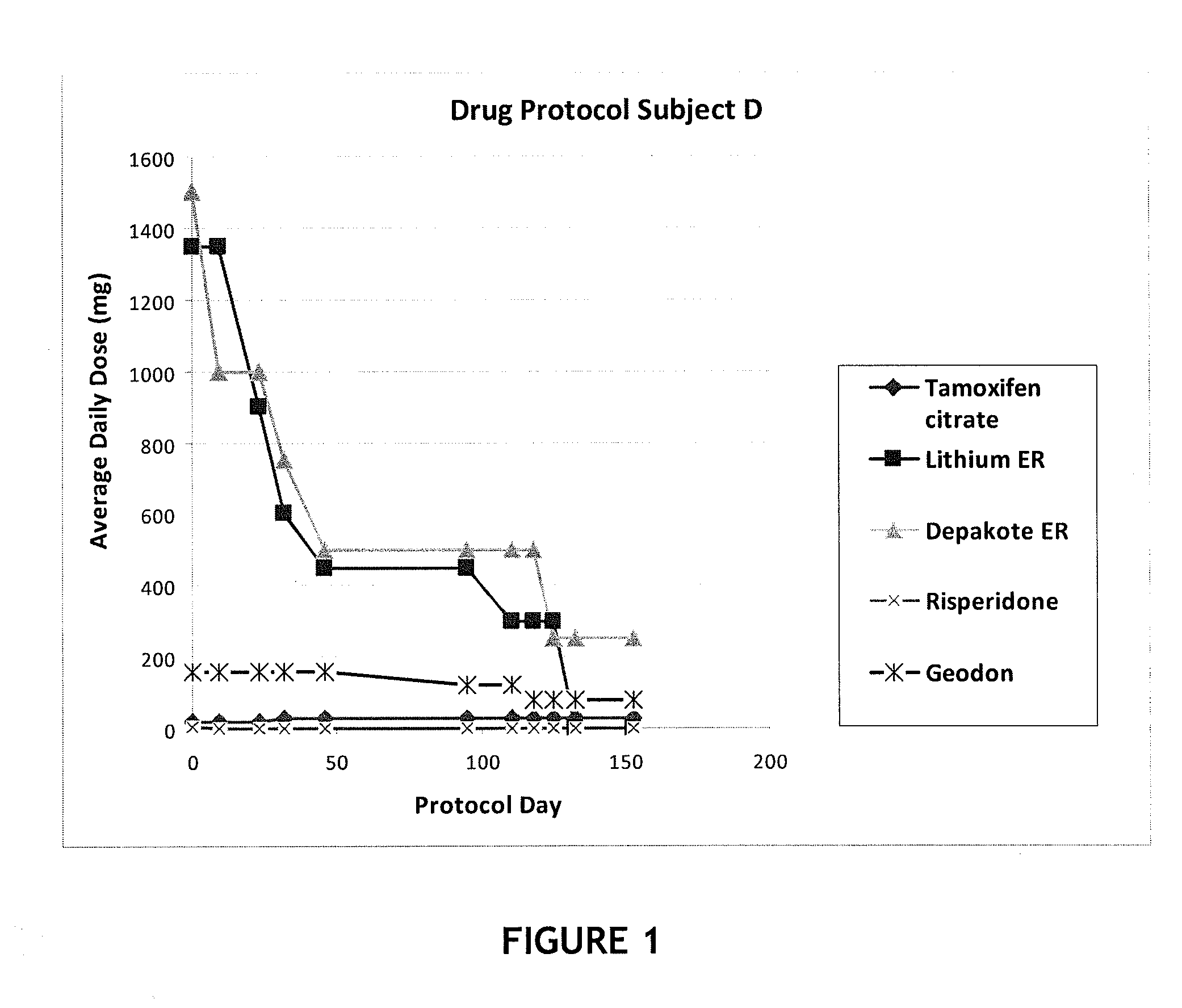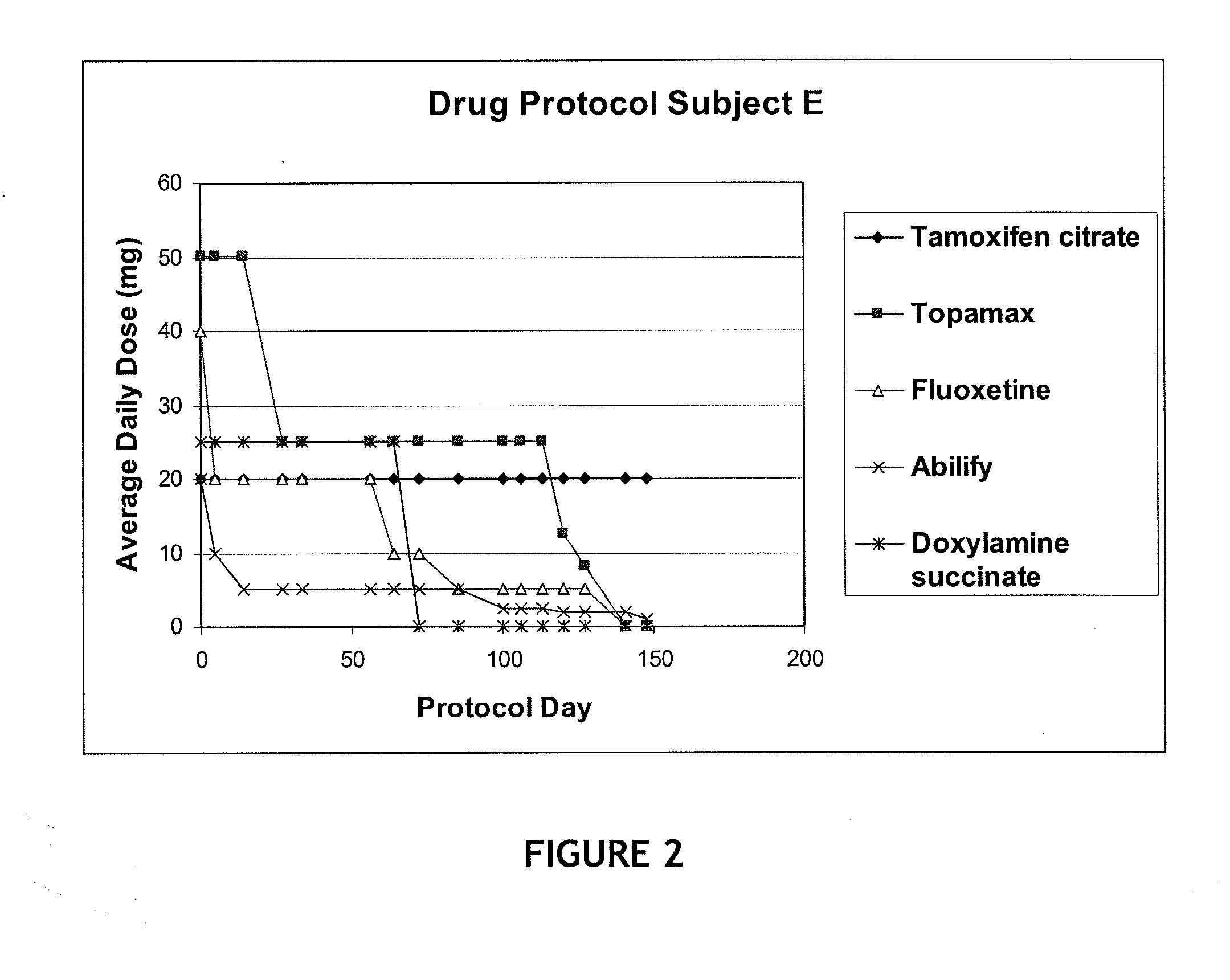Method of treating bipolar disorder or depression using an antiestrogen
a bipolar disorder and anti-estrogen technology, applied in the field of bipolar disorder treatment, can solve the problems of preventing one from functioning normally or feeling well, disabling major depression, and affecting the normal functioning of life, so as to prevent one or more symptoms, the effect of reducing or preventing one or more symptoms
- Summary
- Abstract
- Description
- Claims
- Application Information
AI Technical Summary
Benefits of technology
Problems solved by technology
Method used
Image
Examples
example 1
Use of an Antiestrogen to Treat Symptoms of Bipolar Disorder in Subject A
[0085]Subject A is a 29 year old male in general good physical health with a family history of bipolar disorder. At ten years of age Subject A was diagnosed with ADHD and possible bipolar disorder. Imipramine hydrochloride (Tofranil®), a tricyclic antidepressant, 10 mg daily was prescribed to Subject A, who continued to have bipolar swings. Imipramine was later increased it to 25 mg daily, however Subject A had extreme hand tremors and found it difficult to write or draw. Subject A remained on this protocol for approximately 14-18 months.
[0086]Due to worsening side effects, imipramine was discontinued and Subject A was prescribed bupropion hydrochloride oral tablet (Wellbutrin®), which is used to treat the symptoms of depression, ADD and also bipolar. By the age of twelve Subject A was taking 250 mg of Wellbutrin twice daily. He continued this regimen until the age of fifteen, at which time Subject A made the p...
example 2
Use of an Antiestrogen to Treat Symptoms of Bipolar Disorder in Subject B
[0105]Subject B is a 56 year old female in good general physical health with a family history of bipolar disorder. At the age of 26, Subject B underwent Cholecystectomy. At the age of 37, Subject B was diagnosed with Meniere's Syndrome. At the age of 54, Subject B was diagnosed with bipolar disorder II, at which time Lamictal was prescribed by a psychiatrist. Lamictal was taken for ten to twelve weeks and discontinued due to memory loss and black outs. The psychiatrist then prescribed Effexor XR® (venlafaxine hydrochloride) 75 mg / daily. This was discontinued after three days due to lack of sleep, extreme mania, high anxiety and hyperactivity. A general physician prescribed 1.5 mg / Klonopin® (Clonazepam) daily.
[0106]In December 2008, Subject B started taking tamoxifen citrate or Arimidex® daily. For two weeks Subject B took 20 mg base equivalents of tamoxifen citrate daily, and gradually noticed increased mood st...
example 3
Use of an Antiestrogen to Treat Symptoms of Acute / Severe Depression in Subject C
[0109]Subject C is a 26 year old female in good general physical health with no previous history of mental illness or depression. Subject C was prescribed Dapsone as a child in order to treat to treat dermititis herpetiformis. Subject C received no medication in the past four years. In December 2008, Subject C became lethargic, uninterested in usually pleasurable activities, restless, and began oversleeping. After a full month, symptoms of depression became extreme and subject C was thought to be in danger of becoming suicidal.
[0110]Subject C received a single dose of Tamoxifen citrate, 20 mg, on day one, and symptoms of depression lessened within the first eight hours. A descending daily dosing schedule was employed with administration of tamoxifen citrate: 10 mg on day two, 5 mg on day three and 2.5 mg each on day four and day five. Subject C's last dose was 2.5 mg on the fifth day. Symptoms of depress...
PUM
| Property | Measurement | Unit |
|---|---|---|
| Mass | aaaaa | aaaaa |
| Mass | aaaaa | aaaaa |
| Mass | aaaaa | aaaaa |
Abstract
Description
Claims
Application Information
 Login to View More
Login to View More - R&D
- Intellectual Property
- Life Sciences
- Materials
- Tech Scout
- Unparalleled Data Quality
- Higher Quality Content
- 60% Fewer Hallucinations
Browse by: Latest US Patents, China's latest patents, Technical Efficacy Thesaurus, Application Domain, Technology Topic, Popular Technical Reports.
© 2025 PatSnap. All rights reserved.Legal|Privacy policy|Modern Slavery Act Transparency Statement|Sitemap|About US| Contact US: help@patsnap.com



